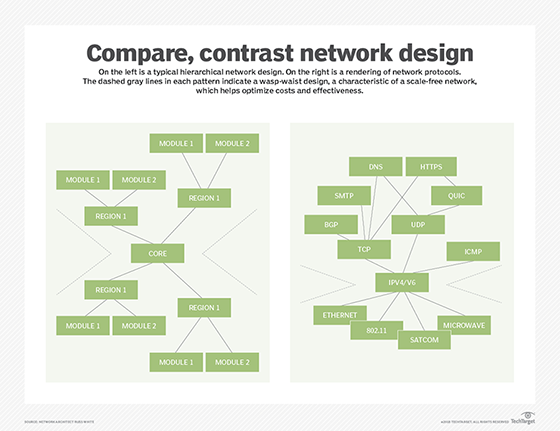
.shock - Fotolia
Too many tools hobble network management design
'Measure twice, cut once' doesn't work for network management. It's time for the industry to consider a new way to coordinate network management design tools.
Carpenters always remember one simple piece of advice when they are working on a job: Measure twice, cut once. It's a little different in networking, though. In our industry, my advice is the following: Measure many times, but never cut.
Take your typical network. Ask five different administrators and outside consultants about the tools they use to determine how the network is performing or to troubleshoot problems, and you'll get six different answers -- maybe more -- about their network management design strategies.
Why? Because most networks of any scale are managed in an ad hoc manner. When a tool is needed to measure something specific, a tool is built to measure that specific thing. The tool is then placed in a library of network management design tools, available for use by everyone, but it's most likely only used and maintained by the person who wrote it. The result is a plethora of tools.
At some point, the network operator will try to unify this random set of tools, but this is an effort that almost never succeeds, because it would take years to do so. And the entire network engineering staff is under pressure to do something -- preferably before the end of the quarter.
That's why I believe it's time to rethink how we manage these things we call networks. A useful place to start is with the network management design patterns that have driven network scale over the last 20 years. Two of these design patterns are illustrated below.

On the left side of this illustration is a typical hierarchical design. While it is shown here as a three-layer hierarchy, you would observe the same pattern in a two-layer hierarchy or a layer-within-layers design. On the right is a cut-down rendering of a few of the protocols in use today. Note that neither of these network management design patterns was created by one person, or even one group of people. Instead, these patterns are the result of many years of work by very smart engineers attacking completely different problems -- even different kinds of problems.
There is a point of commonality between these patterns, however; the dashed gray lines offer a hint. Both design patterns mimic what's called a wasp waist. That's a characteristic of a scale-free network, which is one way in which many different systems can be arranged to optimize communication costs and effectiveness.
Now, let's see how far too many network monitoring and management systems are built today. Imagine what the set of tools must look like, with each tool having its own way of measuring things, its own way of storing things and its own way of reporting or displaying things. Where is the wasp waist? If the tools do not form a scale-free design like the two designs illustrated above, what should this tell us about our network monitoring systems?
We'll discuss the steps managers should consider when evaluating network measurement and management more efficient in part two of this series.






